Bar Tools, Glassware, Corkscrews (1 Page)
Published On: 5/14/2019 Last Modified: 6/16/2025
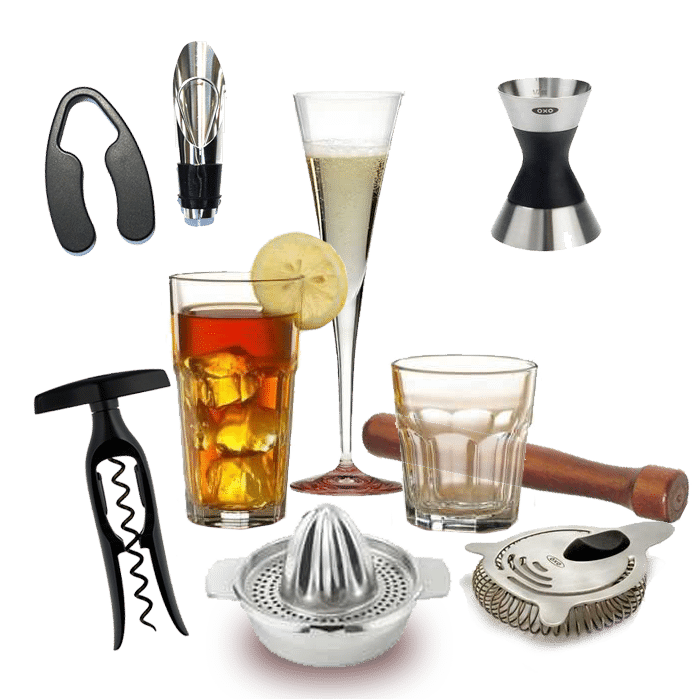
Claire Bretecher, a profound French cartoonist, once drew this pathetic, wordless sequence: She is lying on her mattress on the floor, bawling her eyes out, while his scowling memory hovers in a thought balloon overhead. She gathers her strength, pulls herself together, rises, and boots the scoundrel out of her mind. Resolved, she marches determinedly into the kitchen, takes a bottle of wine from the small rack under the counter, and, newly confident, threads a simple, T-shaped corkscrew into the bottle. For the next five frames she struggles vainly with the cork, wedging the bottle between her knees and yanking, holding it on the floor between her feet and pulling. Dismayed, she carries the bottle back to her mattress, corkscrew lodged tight in the unbudging cork, and again begins bawling while his scowling image reappears overhead.
You know the feeling. It has happened to you, man or woman. It has happened when the boss came to dinner, in a hotel room, or on a picnic. It need never happen again.
Where Bretecher’s woman screwed up was not by choosing the wrong man, but by choosing the wrong corkscrew. That simple, T-shaped device is frustration incarnate. Samuel Henshall, who patented it in 1795, should be immortalized in the wax museum beside the Marquis de Sade.
A replacement is necessary, because in this age of microchips and rocketships, most fine wines are sealed with a plug of resilient, spongy wood cut from the bark of the Quercus suber, more commonly known as the cork oak tree.
Cork hugs the glass neck of the bottle with tenacity. When kept moist by the wine in a reclining bottle, corks can last 25 years or more before they have to be replaced.
So if you have acquired the civilized habit of a refreshing glass of wine with your meal, here are a few tips on selecting and using cork pullers.
Tips on technique
Once you have a good corkscrew, there are a few pointers you should know for smooth operation.
- The first step is to prepare yourself mentally. Breathe deeply, and repeat three times, “I am smarter than the cork.”
- Then peel away all the foil or plastic capsule and wipe the top. Mold and other gunk hang out on cork tops and can give the wine an odd taste.
- Keep your tip sharp. Sharp tips on corkscrews prevent cork bits in the wine.
- Make sure the tip of your corkscrew is aligned with the rest of the helix so that it is not boring its way down while the rest of the helix is tearing a wide hole. Always insert the helix in the center of the cork and be certain it is going straight in.
- If something goes wrong, stop and think. Remember that you are smarter than the cork. Do not force the issue. If only half the cork is coming out, screw the helix in deeper. If it is pulling out the center only, remove the corkscrew and drill another hole where you can start over again, or screw the helix down the side and try to pull it from there.
Choose your weapon
The T-shaped Henshall screw is a worthless piece of junk. Right now, get up and go into your kitchen and throw yours out. The good news is there are several designs for corkscrews that work flawlessly. A few are even idiot-proof. You would not cut your lawn with a pair of scissors, and neither should you try to pull a cork with a device originally designed to remove perfume stoppers. Go out and buy a real cork remover. There are three features to look for when selecting a cork remover.
- Worms not augers. The part which is inserted into the cork should be a helix formed from a heavy wire that looks like a coiled worm. These wire worms do not tear the cork as they wind through it. Augers, whose thread is more like a screw, tear corks and should be avoided.
- Mechanical advantage. The device should give you a mechanical advantage with levers, gears, or screws. Its design should translate a gentle motion on your part to forceful action on the cork.
- Wide and long. Make sure the worm is wide enough and long enough to get a good grip on the whole cork. Narrow worms tend to pull out only the center of the cork, while worms shorter than 1.75″ only screw through part of a long cork, and often tear it in half.
I have personally used all of these devices many many times.
Other Bar Necessities
Here’s a list of what you need to make sure you can make professional quality drinks and serve them in style. For some drink ideas, visit my drink recipes pages.
Bar Necessities: The Right Muddler For Mojitos And More
A muddler, a mini-baseball bat used to crush herbs, is a must if you enjoy mojitos and other muddled cocktails.Bar Necessities: Discovering Schrafft’s Luncheonette Glass
Schrafft's Luncheonette-Style Glass with Holder Gift Box Set of 2 are a wonderful addition to your home glassware collection.Corkscrews: The Winged Screw Review And Rating
When it comes to selecting the right corkscrew, there are countless design options available. One that I recommend is the winged corkscrew.Corkscrews: The Ah-so, Don’t Let The Funny Name Fool You
The ah-so device is one of the most unique tools for removing a cork and was once all the rage in California.Corkscrews: Don’t Do The Double Screws
The double screw is so-called because it removes the cork by screwing into the cork. Then a latch is thrown so a thread pulls it out.Corkscrews: Electric Corkscrews Are An Interesting Option
The Oster battery operated wine opener is a really clever device. With the touch of a button it can open 30 bottles between charges.Corkscrews: Pump Style Corkscrews Review And Rating
The compressed air cork remover looks like a giant needle to be inserted through the cork. While they usually work fine, they can break off.Corkscrews: The Classic Waiter’s Lever
The waiter's lever is still popular with bartenders and restaurant staffs. It is compact and folds up like a pocket knife.Bar Necessities: Selecting The Right Champagne Flutes
Bar Necessities: The Best Cocktail Shaker Kit
DIY Cocktails: A Guide To Creating A Variety Of Mixed Drinks
Bar Necessities: Choosing The Right Beer Glasses, Mugs, Tankards, And Steins
Bar Necessities: Discovering Schrafft’s Luncheonette Glass
Bar Necessities: The Right Wine Glasses For The Job
Bar Necessities: Our Favorite Martini Glasses
Bar Necessities: Exceptional Collins and Rocks Glasses
Bar Necessities: Selecting A Properly Designed Wine Decanter
Bar Necessities: The Right Muddler For Mojitos And More
Bar Necessities: Adding A Citrus Juicer To Your Home Bar
Bar Necessities: Selecting The Right Bar Spoon
Bar Necessities: Reviewed Oxo Cocktail Strainer
Bar Necessities: Choosing The Right Measuring Shot Glass
Corkscrews: The Foil Cutter (AKA Foil Mohel)
Related articles
- Drink Recipes That Are The Perfect Accompaniment To Any Cookout (9 Recipes, 5 Articles)
- Bar Tools, Glassware, Corkscrews (1 Page)


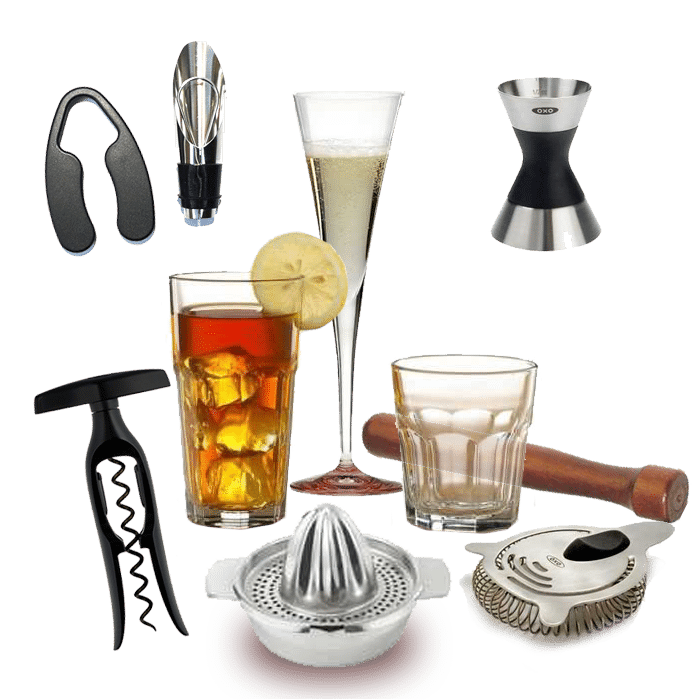
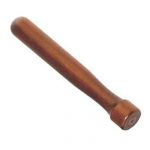
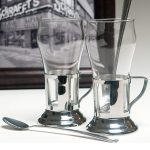
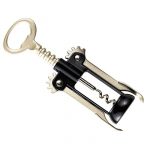
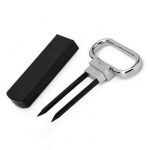
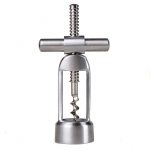
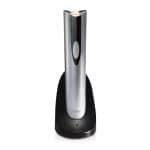
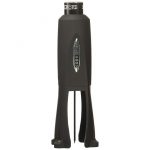
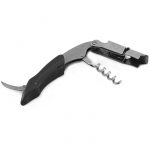






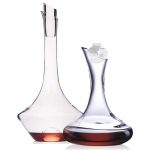
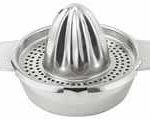

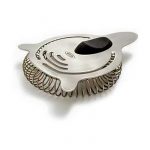
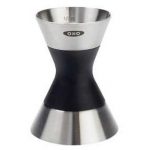
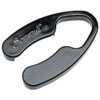
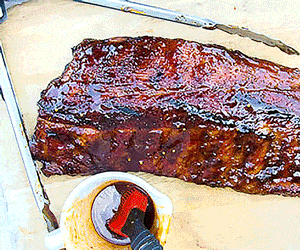
High quality websites are expensive to run. If you help us, we’ll pay you back bigtime with an ad-free experience and a lot of freebies!
Millions come to AmazingRibs.com every month for high quality tested recipes, tips on technique, science, mythbusting, product reviews, and inspiration. But it is expensive to run a website with more than 2,000 pages and we don’t have a big corporate partner to subsidize us.
Our most important source of sustenance is people who join our Pitmaster Club. But please don’t think of it as a donation. Members get MANY great benefits. We block all third-party ads, we give members free ebooks, magazines, interviews, webinars, more recipes, a monthly sweepstakes with prizes worth up to $2,000, discounts on products, and best of all a community of like-minded cooks free of flame wars. Click below to see all the benefits, take a free 30 day trial, and help keep this site alive.
Post comments and questions below
1) Please try the search box at the top of every page before you ask for help.
2) Try to post your question to the appropriate page.
3) Tell us everything we need to know to help such as the type of cooker and thermometer. Dial thermometers are often off by as much as 50°F so if you are not using a good digital thermometer we probably can’t help you with time and temp questions. Please read this article about thermometers.
4) If you are a member of the Pitmaster Club, your comments login is probably different.
5) Posts with links in them may not appear immediately.
Moderators